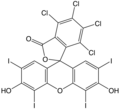Sonodynamic therapy
Sonodynamic therapy (SDT) is a form of ultrasound therapy in which ultrasound waves are used in conjunction with chemotherapeutic drugs or radiosensitizers to enhance the effects of the drugs. This therapy is primarily used in the treatment of cancer and other diseases.
Mechanism of Action
The mechanism of action of sonodynamic therapy involves the use of ultrasound waves to enhance the effects of chemotherapeutic drugs or radiosensitizers. The ultrasound waves are believed to increase the permeability of cell membranes, allowing the drugs to enter the cells more easily. This can enhance the effectiveness of the drugs and potentially reduce the amount of drug needed for treatment.
Applications
Sonodynamic therapy has been used in the treatment of various types of cancer, including breast cancer, lung cancer, and prostate cancer. It has also been used in the treatment of other diseases, such as Alzheimer's disease and Parkinson's disease.
Advantages
One of the main advantages of sonodynamic therapy is that it can potentially reduce the amount of chemotherapeutic drugs needed for treatment. This can reduce the side effects associated with these drugs. Additionally, because ultrasound waves can penetrate deep into tissues, sonodynamic therapy can be used to treat tumors that are difficult to reach with other forms of treatment.
Disadvantages
While sonodynamic therapy has many potential benefits, it also has some disadvantages. One of the main disadvantages is that the effects of the therapy can be difficult to predict. This is because the effects of the ultrasound waves can vary depending on the specific characteristics of the tumor and the surrounding tissues. Additionally, while the therapy can potentially reduce the amount of drug needed for treatment, it can also potentially increase the risk of drug resistance.
Future Research
Future research in sonodynamic therapy is focused on improving the predictability and effectiveness of the therapy. This includes research into the specific mechanisms of action of the therapy, as well as research into new drugs and radiosensitizers that can be used in conjunction with the ultrasound waves.
Transform your life with W8MD's budget GLP-1 injections from $125.
W8MD offers a medical weight loss program to lose weight in Philadelphia. Our physician-supervised medical weight loss provides:
- Most insurances accepted or discounted self-pay rates. We will obtain insurance prior authorizations if needed.
- Generic GLP1 weight loss injections from $125 for the starting dose.
- Also offer prescription weight loss medications including Phentermine, Qsymia, Diethylpropion, Contrave etc.
NYC weight loss doctor appointments
Start your NYC weight loss journey today at our NYC medical weight loss and Philadelphia medical weight loss clinics.
- Call 718-946-5500 to lose weight in NYC or for medical weight loss in Philadelphia 215-676-2334.
- Tags:NYC medical weight loss, Philadelphia lose weight Zepbound NYC, Budget GLP1 weight loss injections, Wegovy Philadelphia, Wegovy NYC, Philadelphia medical weight loss, Brookly weight loss and Wegovy NYC
|
WikiMD's Wellness Encyclopedia |
| Let Food Be Thy Medicine Medicine Thy Food - Hippocrates |
Medical Disclaimer: WikiMD is not a substitute for professional medical advice. The information on WikiMD is provided as an information resource only, may be incorrect, outdated or misleading, and is not to be used or relied on for any diagnostic or treatment purposes. Please consult your health care provider before making any healthcare decisions or for guidance about a specific medical condition. WikiMD expressly disclaims responsibility, and shall have no liability, for any damages, loss, injury, or liability whatsoever suffered as a result of your reliance on the information contained in this site. By visiting this site you agree to the foregoing terms and conditions, which may from time to time be changed or supplemented by WikiMD. If you do not agree to the foregoing terms and conditions, you should not enter or use this site. See full disclaimer.
Credits:Most images are courtesy of Wikimedia commons, and templates, categories Wikipedia, licensed under CC BY SA or similar.
Contributors: Prab R. Tumpati, MD











